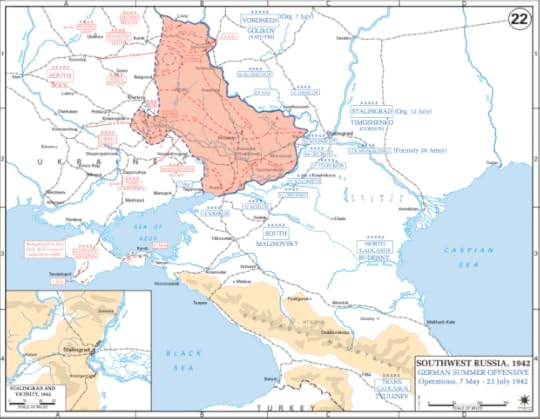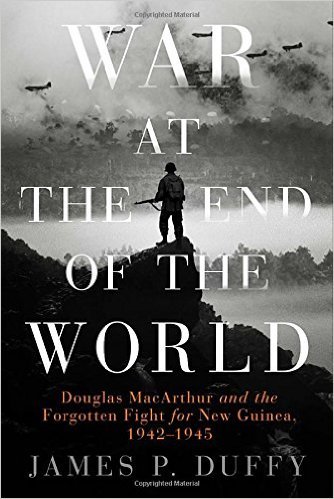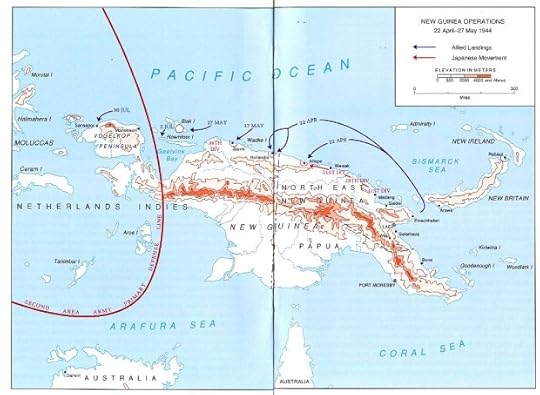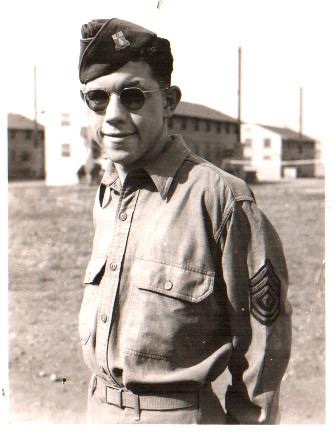Mark Scott Smith's Blog: Enemy in the Mirror, page 103
April 7, 2016
姿三四郎 Sanshiro Sugata – 1943
The directorial debut of the famed Japanese film director Akira Kurosawa, 姿三四郎 (Sanshiro Sugata) was released in March 1943. Based on a novel by Tsuneo Tomita (the son of a prominent Judo practitioner), the film follows a youth who travels to the city to learn Jujutsu, but discovers a new form of self-defense known as Judo. The main character is based on Saigō Shirō, one of the earliest disciples of Judo.
The film includes many of Kurosawa’s directorial trademarks, such as the use of transition wipes (where one shot replaces another with a special shape or travels from one side of the frame to another), weather patterns reflecting character moods, and abruptly changing camera speeds.
The film Sanshiro Sugata was remade several times and a sequel, Sanshiro Sugata Part II, was released in 1945.
The post 姿三四郎 Sanshiro Sugata – 1943 appeared first on Enemy in the Mirror.
April 4, 2016
Kinderlandverschickung – Evacuation of Children
The term Kinderlandverschickung (KLV) was first used in the late 19th century to describe the foster care relocation of sick and underprivileged children to the countryside. At the outbreak of WWII, although there were no large scale civilian evacuations as in Britain,

the National Socialist People’s Welfare (NSV) organized the relocation of mothers with very young children, with or without older siblings (and some pregnant women) to host families in safer areas. The relocation of children aged 10-14 years was the responsibility of the Hitler Youth.
Due to lost records, the total number of evacuations during the war is unknown but in 1943, a senior official in the Hitler Youth estimated about three million children and young people (including 1 million in KLV camps) had been evacuated.
The post Kinderlandverschickung – Evacuation of Children appeared first on Enemy in the Mirror.
March 31, 2016
U.S. Retakes Attu – May 1943
In June 1942 Japanese infantry invaded the Aleutian Islands of Kiska and Attu and established garrisons. In May 1943 American forces retook Attu; in August Americans retook Kiska.

The post U.S. Retakes Attu – May 1943 appeared first on Enemy in the Mirror.
March 28, 2016
Let the Storm Break Loose! – Goebbels 1943
Propaganda Minister Joseph Goebbels‘ speech on February 18, 1943 at the Berlin Sportpalast is often considered his most important of the war.
Unlike previous Nazi propaganda that claimed incontestable German victories, the Sportpalast speech acknowledged, for the first time, that Germany was in danger and the war would be long and difficult. Calling for total war, Goebbels exhorted the entire population to fight for Germany and the survival of a non-Bolshevist Europe.
Goebbels concluded the speech with: “Now, people rise up, and let the storm break loose!”
The post Let the Storm Break Loose! – Goebbels 1943 appeared first on Enemy in the Mirror.
March 24, 2016
厂窖惨案 – Changjiao Massacre 1943

Changjiao Educational Base for Patriotism
While the most infamous was the 1937 Rape of Nanking, the Japanese Army also committed many other atrocities throughout Asia during WWII. The Changjiao Massacre, a four day rampage carried out by the Japanese China Expeditionary Army in May 1943, involved the murder of ~30,000 Chinese civilians.
It is highly likely that all armies have some soldiers who commit atrocities in wartime. However, it is probable that most regular army command structures do not condone such behavior and incidents are usually isolated. Organized atrocity, as seen with the Holocaust or the German Einsatzgruppen who murdered Jews, Soviet Commissars and other “undesirables” on the Eastern Front is less common.
Numerous well-documented reports indicate the Japanese Army was exceptionally brutal in its conquest and occupation of Asian countries. The Japanese “big brother” who was supposed to represent the “Light of Asia” and free exploited people, ended up being an abusive, murderous occupier.
It is very disturbing today, that unlike modern-day Germany, a country that has gone through a great deal of processing about Nazi wartime crimes, Japan has still not come to complete terms with the atrocities their soldiers committed throughout WWII.
The post 厂窖惨案 – Changjiao Massacre 1943 appeared first on Enemy in the Mirror.
March 21, 2016
It Don’t Mean a Thing – Duke Ellington
Edward Kennedy “Duke” Ellington (1899 – 1974) was a key figure in American jazz composition and performance. A pianist and bandleader, Ellington travelled throughout Europe in the 1930s and gained national prominence in the USA with his orchestra’s appearances at the Cotton Club in Harlem.
Although widely considered one of the most influential figures in jazz, Ellington deflected the description, saying he played “American Music.”
The post It Don’t Mean a Thing – Duke Ellington appeared first on Enemy in the Mirror.
March 17, 2016
German Defeat at Stalingrad – February 1943
In September 1942, the German Sixth Army under General Friedrich Paulus was on the outskirts of Stalingrad, expecting to take the city within a few days. But Soviet leader Joseph Stalin, realizing the loss of Stalingrad would allow the Germans to advance into the Caucasus, committed significant reinforcements and supplies for defense of the city.

The ensuing desperate battle for Stalingrad involved fierce urban street fighting with tremendous losses on both sides. In November 1942, Marshal Georgy Zhukov launched a counteroffensive and encircled the stalled Wehrmacht 6th Army. In December 1942, a major relief operation failed and promised Luftwaffe air support did not materialize.
In January 1943, General Paulus requested permission for a break-out withdrawal (probably still possible). In response, Hitler promoted Paulus to Generalfeldmarschall and ordered him hold ground at all costs.
On February 2, 1943, General Paulus, with ~150,000 dead soldiers, surrendered the remaining 91,000 men of his army. At the end of the war, only 6,000 soldiers of the 6th army returned home.
With ~2 million combined civilian and military deaths, the battle of Stalingrad was one of the bloodiest battles in history. Like the Battle of Midway for the Japanese, the disastrous Battle of Stalingrad proved to be a major turning point for Germany in WWII.
The post German Defeat at Stalingrad – February 1943 appeared first on Enemy in the Mirror.
March 14, 2016
Imperial Japanese Navy Air Service -大日本帝國海軍航空隊
In 1923 Britain assisted Japan in the development of aircraft carriers. Throughout the 1920s, instructors from Germany trained fledgling Imperial Japanese Navy pilots in obsolescent foreign aircraft. But in the early 1930s, incorporating advanced modern technology, Japan secretly began building its own aircraft. Apparently, shortly before the Pearl Harbor attack, U.S. military strategists still assumed that Japan had only a few hundred relatively obsolete aircraft, copied from older British, German, Italian and American designs.
In reality, at the beginning of the Pacific War, Imperial Japan had the finest naval aviation corps in the world. Japanese aircraft (e.g. the legendary Mitsubishi Zero fighter) were equal or superior to any Western model. Additionally, well-trained Japanese pilots had gained valuable experience since 1937 in the Second Sino-Japanese War.
During the first six months of the Pacific War, Japan achieved a stunning succession of victories. Then came the Battle of Midway where the Imperial Japanese Navy lost >300 pilots and four aircraft carriers in a battle from which they never fully recovered.
Despite Yamamoto’s warning, Japan had no contingency plans for a long war. Most of the operational types with which Imperial Japan began the Pacific War in December 1941, were still front line aircraft when the war ended in August 1945. In contrast, the Allies were able to accelerate the replacement of obsolete aircraft with new improved designs.
At the beginning of the Pacific War, Japan made the decision to deploy all of their most experienced pilots in battle. In contrast, after a brief period of deploying their most experienced pilots very early in the Pacific War, the Americans deliberately retained their best pilots as flight instructors and invested heavily in training facilities. The result was initial Japanese air superiority that soon dwindled with the loss of men and aircraft. Ultimately, Allied aircraft production vastly outpaced Japanese ability to keep up.
The post Imperial Japanese Navy Air Service -大日本帝國海軍航空隊 appeared first on Enemy in the Mirror.
March 10, 2016
New Guinea -1943

“Monsoon-soaked wilderness, debilitating heat, impassable mountains, torrential rivers and disease-infested swamps – New Guinea was a battleground far deadlier than the most fanatical of enemy troops.”
– James P. Duffy

In January 1942, overwhelming Japanese forces captured Rabaul at the northeastern tip of New Britain Island. Although frequently bombed by the Allies, Rabaul went on to become a mighty stronghold of Japanese forces in the area. Rather than attack, the Allies subsequently isolated and contained Japanese forces around Rabaul for the remainder of the war. Upon surrender in August 1945, Japan still had ~69,000 Japanese troops in Rabaul.
In preparation for an invasion of Australia, Japanese forces then concentrated on taking Port Moresby on southern Papua. The battle of the Kokoda Track exemplified heroic Allied efforts to halt this part of the New Guinea Campaign.
In January 1943 the Allied and the Japanese forces facing each other on New Guinea were like two battered heavyweights. Round one had gone to the Americans and Australians who had ejected the Japanese from Papua, New Guinea.
Over three grueling months of frontal attacks against well-entrenched Japanese forces, General Douglas MacArthur was able to establish a military staging area and airstrip at Buna on the north coast. The cost of this bloody operation: Deaths of ~13,000 Japanese and 8,500 Allies (5,698 Australians).
James Lloyd Evans
41st U.S. Army Division/163 Infantry Regiment/3rd Batallion/Co. M
My late father-in-law Jim Evans, who slogged through that terrible campaign, has been an inspiration for my writing about World War II as a war baby born in 1942.
The New Guinea campaign of the Pacific War lasted from January 1942 until the end of the war in August 1945.
The post New Guinea -1943 appeared first on Enemy in the Mirror.
March 7, 2016
Panzerlied
The Panzerlied (tank song), was adapted from a German sailor’s song in June 1933 by Oberleutnant Kurt Wiehle of the Wehrmacht. Since Germany, in defiance of the Treaty of Versaille, was clandestinely developing an armored force at the time, the Panzerlied might be considered as praise for German re-armament.
Original Panzerlied Version from 1933-1945:
First stanza
Ob’s stürmt oder schneit, ob die Sonne uns lacht,
Der Tag glühend heiß, oder eiskalt die Nacht,
Bestaubt sind die Gesichter, doch froh ist unser Sinn, ja, unser Sinn.
Es braust unser Panzer im Sturmwind dahin. (x2)
Whether it storms or snows, or the sun smiles on us,
The day burning hot, or ice cold the night.
Dusty are the faces, but our spirits are high, yes, spirits are high.
Our tank bursts through there in the storm wind of the assault. (x2)
Second stanza
Mit donnerndem Motor, geschwind wie der Blitz,
Dem Feinde entgegen, im Panzer geschützt
Voraus den Kameraden, im Kampfe stehn wir allein, stehn wir allein.
So stoßen wir tief in die feindlichen Reih’n! (x2)
With thundering engines, as fast as lightning,
Towards the enemy, sheltered in the tank,
Ahead of our comrades, In the fight we stand alone, yes stand alone.
So we push deep into the enemy lines! (x2)
Third stanza
Wenn vor uns ein feindlicher Panzer erscheint,
Wird Vollgas gegeben und ran an den Feind.
Was gilt denn unser Leben für uns’res Reiches Heer? Ja, Reiches Heer.
Für Deutschland zu sterben ist uns’re höchste Ehr’. (x2)
When before us a hostile tank appears,
Full throttle is given and we close with the enemy.
What does our life matter for the Reich’s army? Yes, Reich’s army.
To die for Germany is our highest honor. (x2)
Fourth stanza
Mit Sperren und Minen hält der Gegner uns auf,
Wir lachen darüber und fahren nicht drauf.
Und droh’n vor uns Geschütze versteckt im gelben Sand, Ja, gelben Sand.
Wir suchen uns Wege, die keiner sonst fand. (x2)
With obstacles and mines the foe slows us down,
We laugh about it and don’t drive on them.
And cannons threaten hidden in the yellow sand, yes, yellow sand
We search for ways, that no one else found. (x2)
Fifth stanza
Und läßt uns im Stich einst das treulose Glück,
Und kehren wir nicht mehr zur Heimat zurück,
Trifft uns die Todeskugel, ruft uns das Schicksal ab, ja, Schicksal ab.
Dann wird unser Panzer ein ehernes Grab! (x2)
And if we are abandoned by treacherous luck,
And if we don’t return home again,
If death’s bullet finds us, and fate calls us away, yes, us away.
Then our tank shall become an iron grave! (x2)
The post Panzerlied appeared first on Enemy in the Mirror.
Enemy in the Mirror
I began by posting events around the turn This website www.enemyinmirror.com explores the consciousness, diplomacy, emotion, prejudice and psychology of 20th Century America and her enemies in wartime.
I began by posting events around the turn of the 20th century as I was researching my first novel about the Pacific War. I continued through WWII for my second novel about the Battle of the Atlantic. Now I am beginning to look at the Cold War as I gather information for my next novel about the Korean War. ...more
- Mark Scott Smith's profile
- 7 followers




